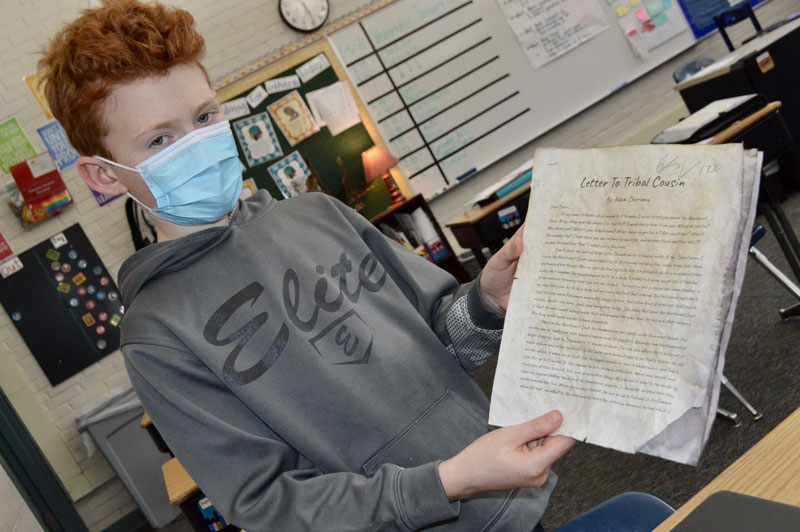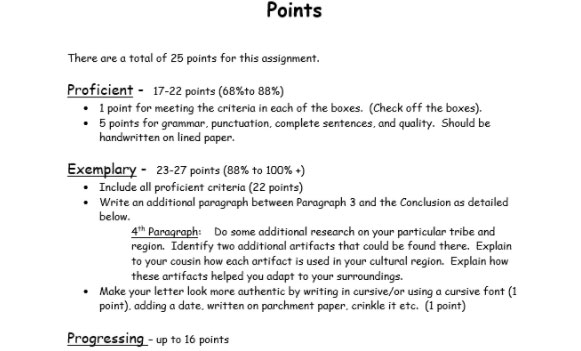East Grand Rapids — When fifth-graders in Brett Scheidel’s Lakeside Elementary social studies classroom were tasked with writing to imaginary cousins, the activity let them show off many aspects of what they had learned studying the North American first people/indigenous people.
Like this excerpt of an imagined correspondence from Charlotte Trost, aka Makade Mikom — which she explained means Black Ice to the Chippewa:
“When you have your clothes made out of deer hide in the summer, you can guess how hot you could get. The women in the tribe and I are CONSTANTLY making clothes.”
Or this, from Adam Cherveny writing as an 11-year-old named Adobe, a member of the Chinook tribe in the Northeast. There, he tells his cousin, “we have a lot of resources including fish, cedar trees, iron, stone and many other things … but the biggest resource we have is whales, which could feed a clan for up to three weeks!”
The letter to a tribal cousin activity fulfilled a language arts curriculum standard that involves writing from a historical perspective, and was part of a monthlong unit led by Scheidel and fellow fifth-grade teachers Kaelynn Benham and Kristen Lecours.
Students researched six common geographical areas of the U.S. — Eastern Woodlands, Pacific Northwest Coast, Plains, Desert Southwest/ Four Corners Cliff Dwellers, Arctic and Southeast — and how each group depended on the natural environment of the areas.
Scheidel said he’s led the letter-writing activity for about a decade of his 36-year teaching career. He said students learn how good writers research and organize their findings; how to look at relationships between historical events, people and geography; and how the past affects what unfolds in the future.
Adam said he was most interested to learn of the Chinooks “that they live in a big group but they work separately, and for marriage they cannot get married in the same clan.”
To make his letter appear as if it was written thousands of years ago, Adam said he soaked the paper in tea water, then dried it in the oven until the texture became brittle. “Then I crumpled it up.”
Charlotte did extra research in order to include real Chippewa — or Ojibway — words throughout her letter. She said she liked that the ice-fishing tribe of the Grand Portage, Minnesota Chippewa, or Gichi Onigaming, “thanked Mother Nature and really preserved a lot of what they did.”
Scheidel said he stresses with his students the importance of learning about history from multiple perspectives, not only as a way to get a more rounded view but to build empathy.
“I’m always amazed at what they come up with,” he said. “A lot of it (their letters) has to do with how intent they were on learning. Social studies and history is awesome, but it can also be very boring if you don’t build it up.”














